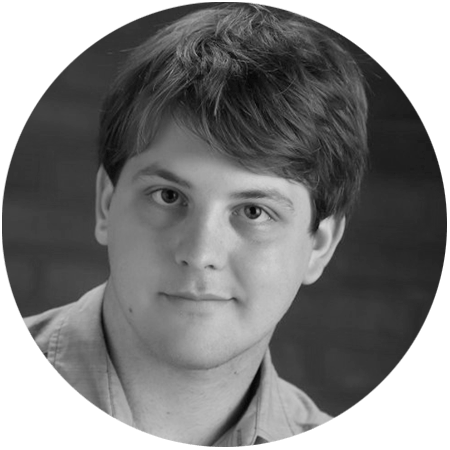Presenting the Problem
The opening of the film previews mystery chronic illness patients seeking healing at a clinic that purportedly practices techniques of Eastern medicine. Though the journeys of these patients are not explored in-depth throughout the film, the initial defeat in the patients' reflections on frustrating personal health battles speaks to a fallacy that is far too often embraced by modern society: the idea that illness is inevitable.
A skepticism surrounding the capacities of Eastern medicine is also presented, though Gores' dismisses such doubts in her own naturopathic leanings. Before she embarks on her mission however, Gores leaves viewers with some high protein food for thought.
With negative news pouring in via every electronic device we own at every second of every day, it's easy to fall victim to the belief that our lives are at the mercy of a sickened outer world. The film begs the question, "what if being a victim is merely a choice we make?"
What if we possess the power to heal ourselves?
Stress Sickens
As noted in the film, fear and stress often stand in the way of healing.
Dr. Jeffrey Thompson, who experiments with sound and its effect on the brain and body, explains that when doctors conduct organ transplants, they first give a patient stress hormones. That way, when the body receives the foreign organ, the immune system doesn't immediately attack it.
When we undergo high levels of stress over long periods of time, the immune system is left in a vulnerable state. Pathogens that a person in a calm and healthy mind would have the immune power to reject can more easily find their way into the body and stay there.
Over the course of our lives, these pathogens can accumulate and lead to disease.
But the accumulation of pathogens isn't entirely irreversible. Gores believes organic healing in the body can happen when we alleviate the burdens of past emotional traumas and work to eliminate primary stressors in our own lives.
Internal Healing Versus Western Medicine
“When I was a kid,” Gores recalls, ”I remember thinking how magical it was that when you get a cut, all you did was clean the wound, forget about it, and it healed all by itself.” She added, “We’ve forgotten how intelligent the body is.”
Western medicine is preferential to treating symptoms rather than treating the root cause, which may be harder to discern.
Reliance on drugs to ameliorate symptomatic ails can lead to dangerous addictions and even worsen root problems.
Unfortunately, as noted in the documentary, current health insurance typically doesn't cover alternative healthcare. Medical professionals aren't advised to turn their patients to alternative medicine, and the power of the mind is certainly not embraced as a tactic for healing.
That's where Joe Dispenza's journey provides some illumination.
Dispenza recalls biking in a triathlon in Palm Springs, CA when he was struck by a car from behind. The hit catapulted him from his bicycle, and the compressive force compressed six vertebrae in his spine. The prognosis was that Dispenza would never walk again. He was told he would need the Harrington Rod surgery, a radical procedure.
Dispenza, however, left the hospital without undergoing it. He cites a thought that he was fixated on at the time: "the power that made the body could heal the body." Over the course of the next several months, Dispenza decided to mentally envision the repair of his spine while not letting himself indulge in any thought that he didn’t want to physically experience.
Miraculously, Dispenza recovered and was able to walk again within months, vowing to spend the rest of his life educating the world on the power of the mind.
But while Dispenza's internal journey was one he made largely in solitude, others who find healing with the mind take a more external approach. Elizabeth, whose last name was not included in the film for anonymity purposes, was a vision of healthy living when she was diagnosed with stage IV anal cancer. Nothing in her wellness-oriented lifestyle was something she would've deemed carcinogenic. After meeting with a therapist, Elizabeth came to recognize emotionally injurious parts of her past that informed her behaviors throughout her lifetime.
These memories had gone unaddressed for years, but in remembering them in therapy sessions, experiencing consequent emotions, and releasing them, Elizabeth was able to overcome an uphill battle against a cancer that had spread to various regions of her body. This isn't to say that psychotherapy alone healed Elizabeth, but Gores' own evident bias runs dangerously close to conveying that.
If this documentary made any missteps, most significant was its failure to credit Elizabeth's chemotherapy for the role it played in healing her illness. Western medicine has its problems, but it still, for many, plays a vital role in healing disease—even if the methods are historically more invasive to the body.
Diagnosis Versus Prognosis
Part of Elizabeth's journey to healing meant reducing her stigma to Western medicine. As a practitioner of natural wellness, she was particularly challenged by her conflicted feelings about the various medications and procedures she had to undergo.
Some doctors believe a patient's feelings towards their treatment may alter the way a patient's body responds to it.
Speaking to this topic, Kelly Brogan, Ph.D. touches on the power of mental and emotional work. Having studied radical remissions for over ten years, Brogan found nine tactics that have been consistently applied by those who have made miraculous recoveries.
They included: changing diet radically, taking control of health, following intuition, using herbs and supplements, releasing suppressed emotions, increasing positive emotions, embracing social support, deepening spiritual connection, and having a strong reason for living. Brogan noted that only two of these strategies are physical.
Both Dispenza and Elizabeth are a testament to Brogan's findings.
The implications of that? Self-fulfilling prophecy may be more powerful than we've been led to believe. Having positive thoughts about recovery rather than fear surrounding dark prospective outcomes may influence the way the body copes with illness.
To further elucidate, the film differentiates the medical terms "diagnosis" and "prognosis."
While diagnosis provides a label for a slew of symptoms, informed by science and medical observation, it doesn't define what will happen to a patient. On the other hand, prognosis speaks to the likely course a disease will take.
When patients are given tough prognoses, they may identify so largely with them that their body begins responding in accordance.
Prominent alternative medicine author, Deepak Chopra, commented on the danger of patients letting prognosis inform them, explaining that the experiences of other patients don't necessarily apply to every patient.
Chopra implies that it is, therefore, unproductive and, potentially even, detrimental for a patient to expect another patient's experience with an illness to be their own.
In other words, if patients focused the mind on having a healing experience to recover from a disease rather than subscribing to an inferred guess about how the persistence of the disease may affect them, they may have a greater propensity to recover.
An example of the mind's power to heal was also pointed out as being present in many drug trials. Test subjects are given placebos to demonstrate what happens when the drug isn't taken, for comparison.
In many trials, doctors note that placebos demonstrate statistically equivalent outcomes to the outcomes of those studied who did take the drugs.
"Belief itself shifts biology," said David R. Hamilton, organic chemist and author.
When Hardship Remains
Belief wasn't exalted as the sole source of change, in this film. "Heal" does not advise viewers to sit back and let their stress slip away. In fact, the film succeeds most in conveying the remarkable courage it takes to seek healing with the mind and spirit.
Healing implies a capacity to take on pain. This is evident when the patients at the Eastern medicine clinic are shown crying while the medical practitioner places his hands on their body and conducts what may, to some, look like an exorcism.
Though the patients aren't releasing demons in the most literal sense of the word, there is something to be said for the tears many shed after their experience with it. There is evident emotional release. As mentioned, not every patient at the clinic is shown receiving the treatment, and it remains unclear whether some of those who are shown receiving treatment actually find a conclusion to their pain.
This is an important inclusion, because it's honest. In life, not everyone heals.
Likewise, one of the film's primary subjects, Eva, faces a mystery disease that physically manifests as a severe skin condition. At Gores' advice, Eva meets with a nutritionist and a reiki healer. Despite notable visits to these naturopathic professionals, Eva never receives a medical diagnosis for her skin condition nor is her issue resolved by the end of the documentary.
Gores, however, doesn't perceive Eva case to be evidence against her point that the mind can heal, but rather, as proof of the difficulty that can come with trusting the mind enough to let the body heal itself--especially in a world that trusts chemistry over energy.
In an inspiring closing montage, Gores' film closes on a powerful call to action for both skeptics and optimists alike: believe.


